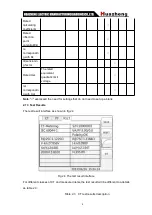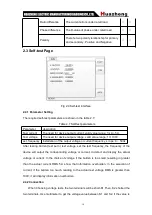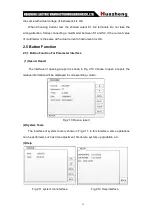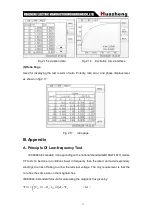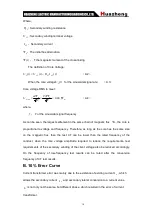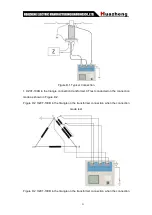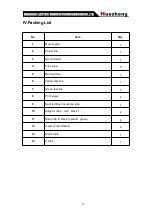
14
Ratio difference
The current errors under rated load.
√
√
Phase difference
The D-value of phase under rated load.
√
√
Polarity
There're two polarity relationship for primary
and secondary , Positive and Negative .
√
√
2.3 Self-test Page
Fig 2.9 Self-test interface
2.4.1 Parameter Setting
The required self-test parameters are shown in the table 2.7:
Table 2.7 Self-test parameters
Parameter
description
Test current
The need for device output current, valid value range: 1mA ~ 5A
Test voltage
The need for device output voltage, valid value range: 1V~100V
est. frequency Installation of the output voltage or current frequency, scope: 0 ~ 50Hz
After testing Current test set or test voltage, set the test frequency, the frequency of the
device will output the corresponding voltage or current, to detect and display the actual
voltage or current. In the choice of voltage, if the burden is too small, resulting in greater
than the actual current RMS 5A, show that information overburden. In the selection of
current, if the burden too much, leading to the actual test voltage RMS is greater than
100V, it will display information overburden.
2.4.2Connection
When Choosing voltage tests, the two terminals will be short-K1 Then, K2 shorted the
two terminals. Use multimeter to get the voltage value between S1 and S2, if the value is









